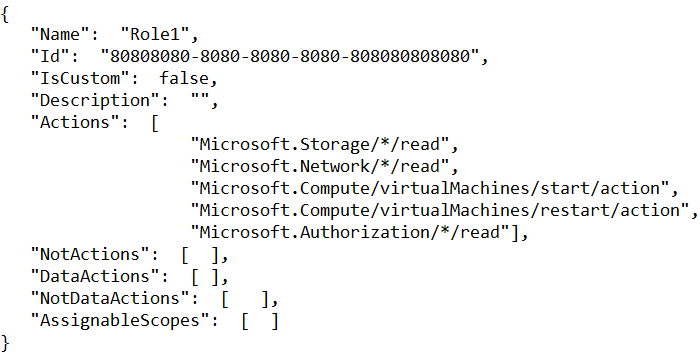At ValidExamDumps, we consistently monitor updates to the Microsoft AZ-303 exam questions by Microsoft. Whenever our team identifies changes in the exam questions,exam objectives, exam focus areas or in exam requirements, We immediately update our exam questions for both PDF and online practice exams. This commitment ensures our customers always have access to the most current and accurate questions. By preparing with these actual questions, our customers can successfully pass the Microsoft Azure Architect Technologies Exam exam on their first attempt without needing additional materials or study guides.
Other certification materials providers often include outdated or removed questions by Microsoft in their Microsoft AZ-303 exam. These outdated questions lead to customers failing their Microsoft Azure Architect Technologies Exam exam. In contrast, we ensure our questions bank includes only precise and up-to-date questions, guaranteeing their presence in your actual exam. Our main priority is your success in the Microsoft AZ-303 exam, not profiting from selling obsolete exam questions in PDF or Online Practice Test.
You create the following Azure role definition.

You need to create Role1 by using the role definition.
Which two values should you modify before you create Role1? Each correct answer presents part of the solution.
NOTE: Each correct selection is worth one point.
Part of example:
'IsCustom': true,
'AssignableScopes': [
'/subscriptions/{subscriptionId1}',
'/subscriptions/{subscriptionId2}',
'/subscriptions/{subscriptionId3}'
The following shows what a custom role looks like as displayed in JSON format. This custom role can be used for monitoring and restarting virtual machines.
{
'Name': 'Virtual Machine Operator',
'Id': '88888888-8888-8888-8888-888888888888',
'IsCustom': true,
'Description': 'Can monitor and restart virtual machines.',
'Actions': [
'Microsoft.Storage/*/read',
'Microsoft.Network/*/read',
'Microsoft.Compute/*/read',
'Microsoft.Compute/virtualMachines/start/action',
'Microsoft.Compute/virtualMachines/restart/action',
'Microsoft.Authorization/*/read',
'Microsoft.ResourceHealth/availabilityStatuses/read',
'Microsoft.Resources/subscriptions/resourceGroups/read',
'Microsoft.Insights/alertRules/*',
'Microsoft.Insights/diagnosticSettings/*',
'Microsoft.Support/*'
],
'NotActions': [],
'DataActions': [],
'NotDataActions': [],
'AssignableScopes': [
'/subscriptions/{subscriptionId1}',
'/subscriptions/{subscriptionId2}',
'/subscriptions/{subscriptionId3}'
]
}
https://docs.microsoft.com/en-us/azure/role-based-access-control/custom-roles
You need to meet the user requirement for Admin1.
What should you do?
Change the Service administrator for an Azure subscription
Sign in to Account Center as the Account administrator.
Select a subscription.
On the right side, select Edit subscription details.
Scenario: Designate a new user named Admin1 as the service administrator of the Azure subscription.
Note: This question is part of a series of questions that present the same scenario. Each question in the series contains a unique solution that might meet the stated goals. Some question sets might have more than one correct solution, while others might not have a correct solution.
After you answer a question in this section, you will NOT be able to return to it. As a result, these questions will not appear in the review screen.
You have an Azure subscription.
You have an on-premises file server named Server1 that runs Windows Server 2019.
You manage Server1 by using Windows Admin Center.
You need to ensure that if Server1 fails, you can recover Server1 files from Azure.
Solution: You create an Azure Storage account and an Azure Storage Sync service. You configure Azure File Sync for Server1.
Does this meet the goal?
Use Azure File Sync to centralize your organization's file shares in Azure Files, while keeping the flexibility, performance, and compatibility of an on-premises file server. Azure File Sync transforms Windows Server into a quick cache of your Azure file share.
Azure Files offers fully managed file shares in the cloud that are accessible via the industry standard Server Message Block (SMB) protocol. Azure file shares can be mounted concurrently by cloud or on-premises deployments of Windows, Linux, and macOS. Additionally, Azure file shares can be cached on Windows Servers with Azure File Sync for fast access near where the data is being used.
Azure file shares can be used to:
Replace or supplement on-premises file servers:
Azure Files can be used to completely replace or supplement traditional on-premises file servers or NAS devices. Popular operating systems such as Windows, macOS, and Linux can directly mount Azure file shares wherever they are in the world. Azure file shares can also be replicated with Azure File Sync to Windows Servers, either on-premises or in the cloud, for performance and distributed caching of the data where it's being used.
https://docs.microsoft.com/en-us/azure/storage/files/storage-files-introduction
You have an Azure subscription that contains an Azure Cosmos DB account. The account is in the East US Azure region and contains three databases. You need to migrate the metadata and databases of the account to the West US Azure region. The solution must minimize administrative effort. What should you do first?
You are implementing authentication for applications in your company. You plan to implement self-service password reset (SSPR) and multifactor authentication (MFA) in Azure Active Directory (Azure AD).
You need to select authentication mechanisms that can be used for both MFA and SSPR.
Which two authentication methods should you use? Each correct answer presents a complete solution.
NOTE: Each correct selection is worth one point.
SMS-based sign-in is great for front-line workers. With SMS-based sign-in, users don't need to know a username and password to access applications and services. The user instead enters their registered mobile phone number, receives a text message with a verification code, and enters that in the sign-in interface.
Users can also verify themselves using a mobile phone or office phone as secondary form of authentication used during Azure Multi-Factor Authentication or self-service password reset (SSPR).
The Authenticator app provides an additional level of security to your Azure AD work or school account or your Microsoft account and is available for Android, iOS, and Windows Phone. With the Microsoft Authenticator app, users can authenticate in a passwordless way during sign-in, or as an additional verification option during self-service password reset (SSPR) or Azure Multi-Factor Authentication events.